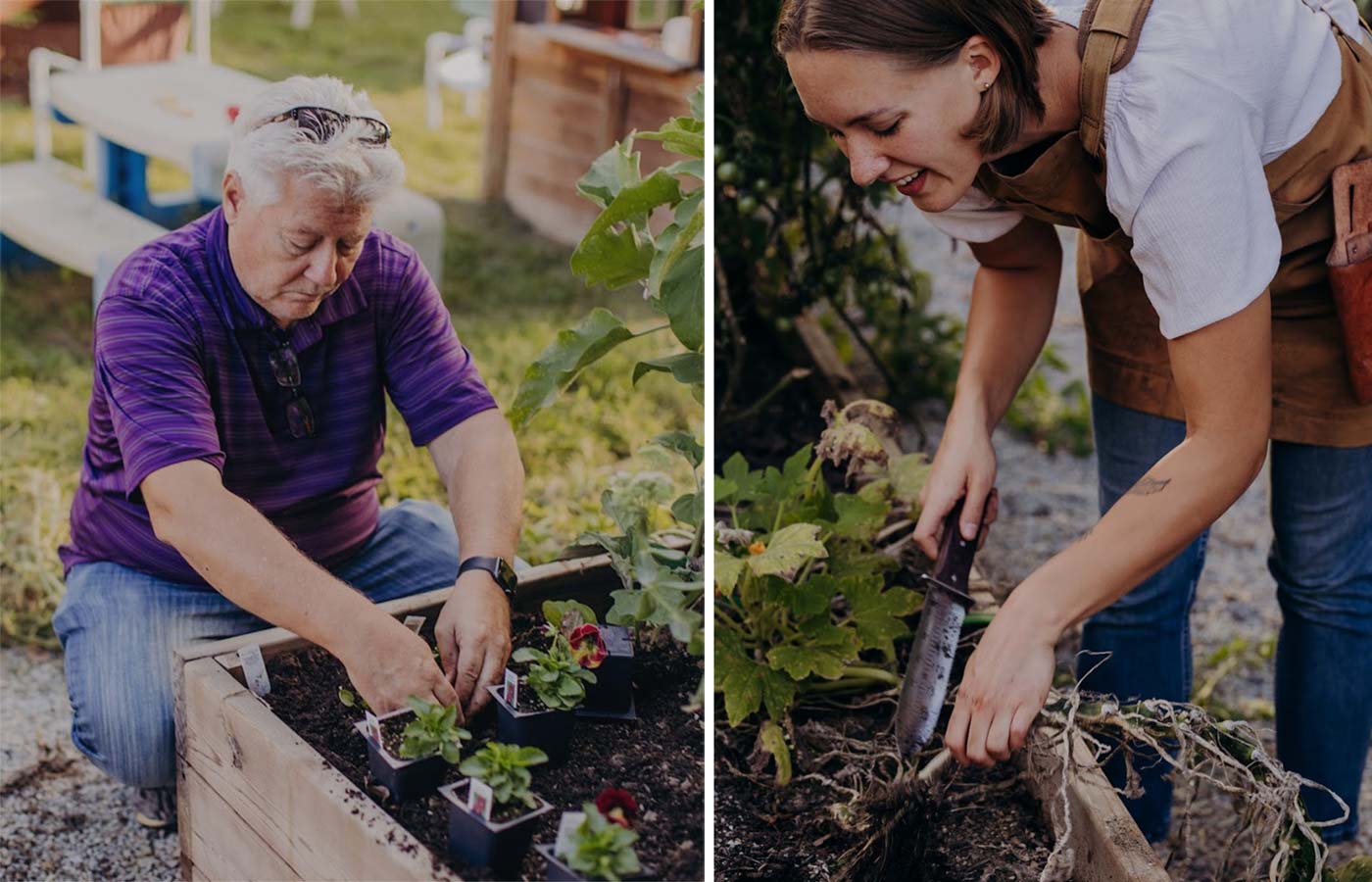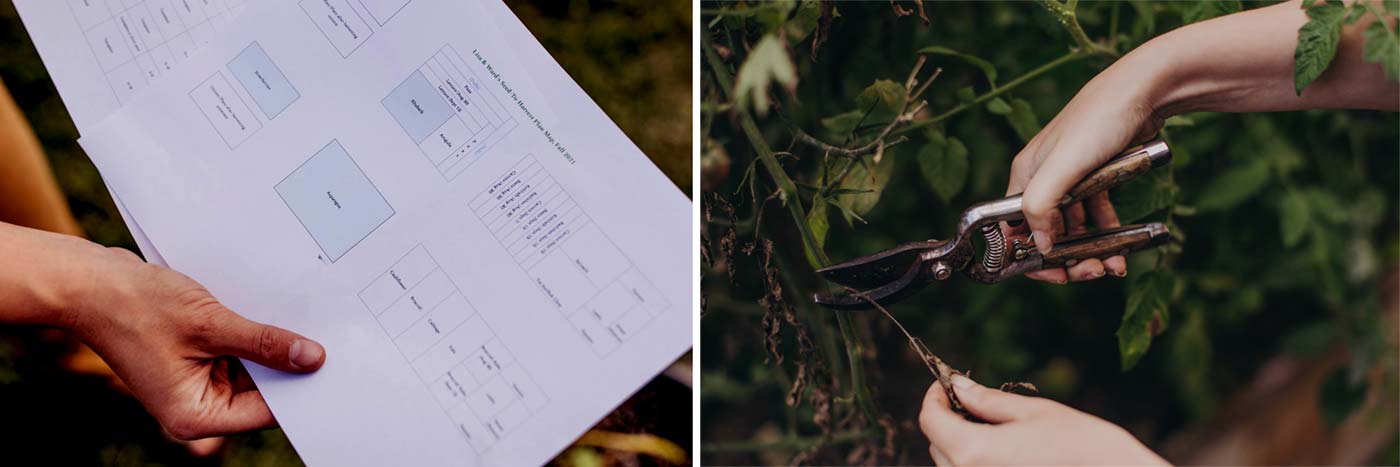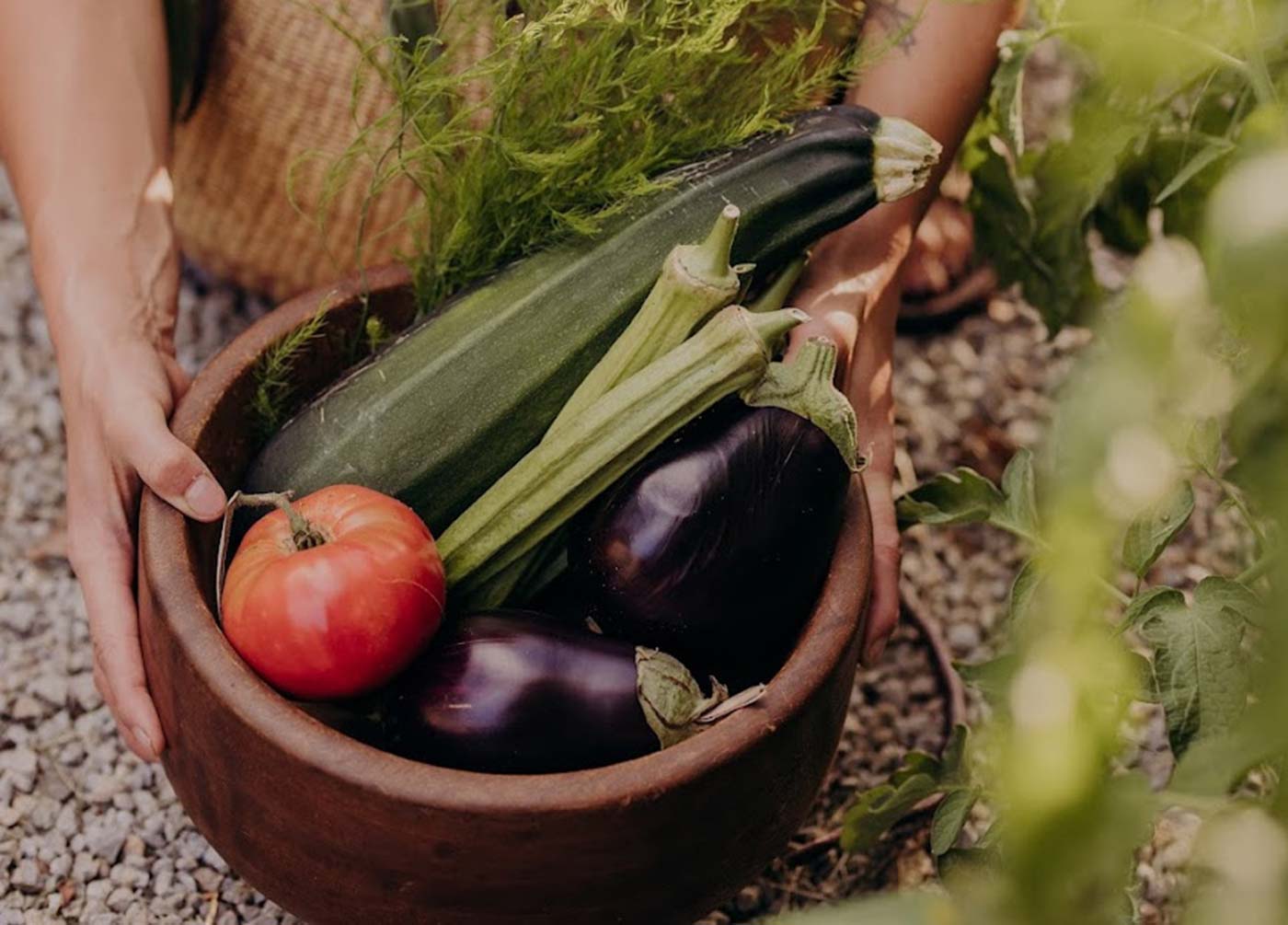Five Steps to a Bountiful Garden
When COVID took the world by storm, many of us soothed our anxieties by reclaiming vintage hobbies: We fed our sourdough starters, assembled 1,000-piece puzzles and knitted woolly scarves. Vegetable gardening especially took on new appeal.
As the experienced gardener in my circle, I suddenly found myself approached by friends and family members for gardening advice and lessons on the basics. I found this work so fulfilling that I started my business, Columbus Foodscapes, to help people learn how to grow an abundance of organic fruits and vegetables in their yards.
After working with dozens of beginner gardeners, I can confidently say anyone can rise to the challenge of growing their own food. Here are the five steps all of my clients start with to grow a bountiful garden:
1. Pick the right location
It matters not how green your thumb, nor how healthy your seedlings, if your plants don’t get enough sunlight each day. The ideal vegetable garden needs over eight hours of sunlight a day.
To find a spot in your house or yard with the maximum sunlight, make a simple, bird’s-eye map of your yard that includes the cardinal directions; any existing structures, like houses or trees; and outdoor faucets and water sources. Then play around with a few locations, ideally a sunny, south-facing spot close to the kitchen for easy harvest and maintenance and near a water source.
Don’t rule out front- and side-yard spaces. Sometimes the best location is a place you hadn’t even considered before.
2. Start with raised beds
Raised beds offer a myriad of benefits, especially in urban areas: improved drainage, reduced soil compaction, increased ease of access and opportunity to grow more intensively in a smaller space.
When building your raised beds, the two most important factors to consider are the dimensions of your beds and the materials you use. I recommend making garden beds no more than 4 feet wide for easy access (2.5 feet if the raised bed is up against a wall or fence) and a minimum of 11 inches deep to reap the benefits of soil depth. You can use a variety of materials to build raised beds, including concrete blocks, cedar, white pine, brick, stone or steel. Cedar is, by far, the most popular material, and for good reason. Cedar is rot resistant, will last for a couple decades and adds a kind of farmhouse beauty.

(left) Ward Weber adds plants to his raised-bed garden. (right) Master gardener Katie Carey provides a helping hand.
3. Use a stellar soil
Let’s start with a stern, but obligatory, note. Soil is not dirt, but it is of great importance to your plants. Soil serves as both the home for crops and the place where they will receive nutrients. The internet is swimming with contradictory information about the perfect vegetable garden soil blend. Digital sources quibble: Do you use perlite or sand? Compost or rotted manure? What is “loam,” anyway?
Here’s the scoop. There is more than one way to build terrific soil for your vegetables. I recommend not getting too caught up in the details and instead starting with a premixed organic soil blend (I’m fond of the one from Price Farms Organics in Delaware County) amended with manure, worm castings, sand or other amendments.
4. Make a planting plan
Repeat after me: I will not go to the garden center without making a plan first.
A planting plan should include two components: 1) a simple, overhead map of your beds that shows what plants and seeds will go where, and 2) a chart that includes important information about what you’d like to plant.
Your planting plan chart should include information such as:
The name of the plant (tomato, Black Beauty variety)
When to plant it (mid-May)
The spacing between plants (12 inches)
Whether to start the plant from seed or with seedlings (start tomatoes from seedlings)
Any special instructions that might be useful (start pruning suckers about a month after planting, side dress with compost six weeks from planting)
If you’re a brand-new gardener, try starting with some of the easier crops to grow:
Herbs: basil, thyme, oregano, lemon balm, dill, cilantro, chives, cilantro and others.
Leafy greens: lettuce, arugula, kale, spinach, mustard greens (a personal favorite!) and other leafy greens.
Root veggies: Carrots, radishes, turnips and beets.
Once you’ve mastered the basics, move on to plants that require more time to mature and need a bit more care, such as tomatoes, peppers, eggplant, squash, cauliflower, broccoli and melon.
5. Maintain with nature in mind
Prevention is better than cure! To prevent disease and pest infestations in your garden and promote plant health, a few simple tasks set you up for success:
Feed the soil to feed the plant: Each time you plant new crops, amend the soil with well-rotted manure, compost or worm castings.
Prune & harvest: Remove any crispy, diseased or browning leaves and stems of plants with clean pruners and harvest regularly to encourage production and plant health.
Check for disease and pests: When you find bugs in your garden, determine whether they are beneficial or not and how to manage them organically.
Water: If watering with a hose head, water deeply and close to the soil surface to avoid splashing water on foliage, which can foster disease.
The best thing you can do, above all else, is just start. Gardens are magical, forgiving things that will bless you with abundance, even if you stumble here and there.
Happy growing!

(left) Making a planting plan helps you buy the right materials. (right) Pruning encourages production and plant health.
LOOKING TO DIG A LITTLE DEEPER?
Here are some of my favorite resources and local businesses for beginner gardeners to explore:
OSU Extension: The “extension,” as it’s affectionately called in the urban farming world, is an indispensable resource for Ohioans. The website offers a range of science-based articles and gardening advice, and you can personally reach out with any gardening troubles you may face.
The Gardener’s A–Z Guide to Growing Organic Food by Tanya L.K. Denckla: A comprehensive guide to growing just about any fruit, vegetable or herb you can think of. Offers detailed guidance on companion planting, planting conditions, timing and much more.
Rodale’s All-New Encyclopedia of Organic Gardening by Robert Rodale: A must-have book for all gardeners! An expansive encyclopedia of all things gardening that can give you great foundational knowledge and answer many of your questions.
Kitchen Garden Revival by Nicole Burke: This book is a great resource if you want to build your own garden from scratch. Nicole walks you through how to install a new garden step-by-step with tips and tricks for planting and gardening basics.
Beechwold Farm Market: A small shop in Clintonville owned by Swainway Urban Farm that offers a curated selection of organic gardening products. Plus, the owner and employees are extremely knowledgeable and always thrilled to offer guidance on products and techniques.
City Folks Farm Shop: Also in Clintonville, a shop that offers a wide variety of homesteading goodies and equipment. Everything from seeds to broadforks, you can probably find it here!
Columbus Garden School: Hosts hands-on, in-depth local classes and workshops that are taught by a range of experts in their fields. Topics are varied but center around growing food, homesteading and ecological gardening.
Price Farms Organics: A local company that offers a range of gardening soils and mulches. If you’re not quite sure what products are best suited for your garden’s needs, give them a call. They are happy to help guide you to the best product and even will help you calculate how much of it you need for your project.
Columbus Foodscapes: My company! Columbus Foodscapes makes growing your own organic food abundant and joyful. We design and install new gardens, help fix up existing gardens, offer maintenance services and even offer garden coaching and classes to help folks learn how to grow organic fruits, vegetables and herbs in their backyards.




